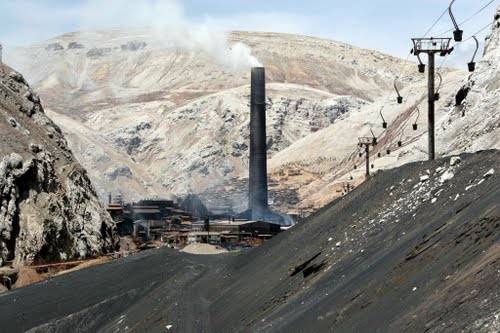By Jed Koball
In a desperate move to facilitate the sale of the Metallurgical Complex in La Oroya, Peru the Ministry of Environment (MAM) approved a significant relaxation of national sulfur-dioxide emissions by increasing the threshold from 20mg/m3 (levels recommended by the World Health Organization) to 250mg/m3 (the current standards in neighboring countries like Chile and Colombia). The move comes less than two weeks after no bids were received in the auction of the Metallurgical Complex whose former operator Doe Run Peru filed bankruptcy nearly eight years ago after claiming the enforcement of environmental standards were hurting profits. Members of the board of creditors in the bankruptcy process, as well as the administration of President Pedro Pablo Kuczynski, argue that the strict emissions standards are scaring away potential buyers. President Kuczynski made the opening of the Metallurgical Complex in La Oroya a top priority of his administration, claiming it will stimulate the economy by adding value to mining exports.

Metallurgical Complex in La Oroya, Peru
While the current emission standards of 20mg/m3 for sulfur dioxide are among the strictest in world, the town of La Oroya has been granted several exceptions to the rule. When the standard of 20mg/m3 was implemented in January of 2014, a special law was passed allowing La Oroya to keep its emission standards at 80mg/m3 (the standard from 2005-2013). Then, in 2015 the board of creditors for the Metallurgical Complex in La Oroya successfully lobbied the Ministry of Environment to create an Environmental Management Instrument that would raise emission standards to 365mg/m3 until 2030 in order to give time to a new operator to install adequate technology in order to comply with the 80mg/m3 standard in La Oroya. With the new standard recently approved by MAM, a new buyer will only have to comply with the 250mg/m3 threshold by the year 2030.
In the meantime, recent studies in La Oroya show that children and pregnant women continue to be at high risk to lead, arsenic, cadmium, mercury poisoning due to decades of toxic emissions falling upon the town. Despite WHO recommendations to maintain sulfur-dioxide emissions below 20mg/m3 the State argues without evidence that the health of the people will not be at risk with reduced standards.
Before the new standard is implemented, the public has ten days to respond. Presbyterian Hunger Program global partners in Peru, Red Uniendo Manos, is working with civil society allies to formally protest the new standard.